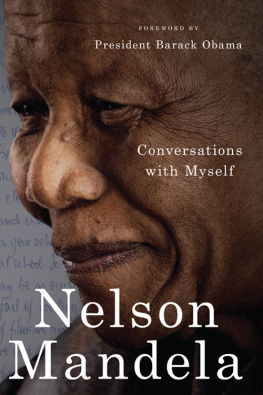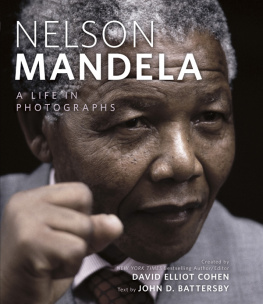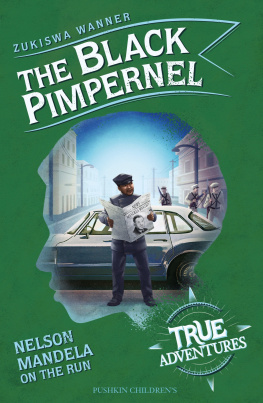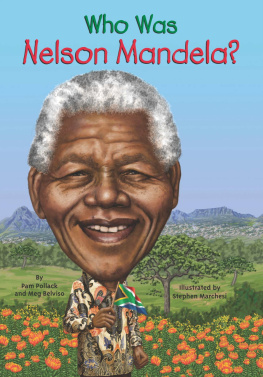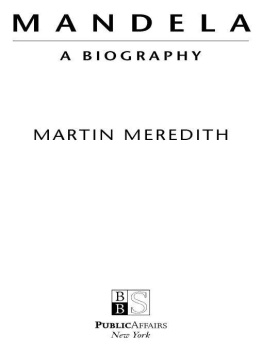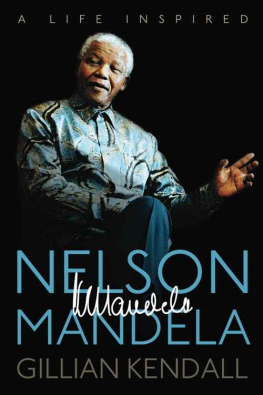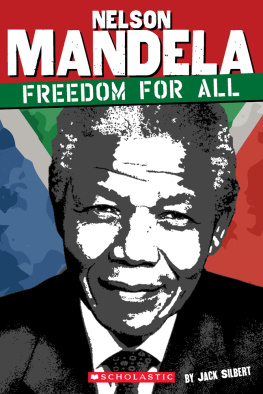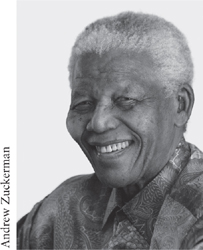We are grateful to Zindzi Mandela for permission to reproduce her poem A Tree Was Chopped Down, and for her support of the Nelson Mandela Centre of Memory and Dialogue.
We thank President Barack Obama for his generous foreword, and Ambassador Donald Gips for facilitating liaison with the President.
We acknowledge the importance to this book of the two sound archives created by Ahmed Kathrada and Richard Stengel, both of which were lodged by their creators with the Centre of Memory and Dialogue after the book had been conceived.
The photographic images for the book have been made with skill and great patience by Matthew Willman, with the exception of the following: (Mandela close-up) Nelson Mandela Foundation.
We are indebted to the following repositories for providing access to materials: Mandela House Museum, South African National Archives, University of Fort Hare and University of the Witwatersrand (Historical Papers).
For assistance and support we thank Zahira Adams, Jon Butler, Eric Chinski, Diana and Kate Couzens, Achmat Dangor, Lee Davies, Imani Media, Zelda la Grange, Molly Loate, Winnie Madikizela-Mandela, Zenani Mandela, Zindzi Mandela, Rochelle Mtirara, Judge Thumba Pillay, Natalie Skomolo, Wendy Smith, Jack Swart, Ivan Vladislavic and Gerrit Wagener.
For Nelson Mandela Foundation Centre of Memory and Dialogue: Verne Harris, Sahm Venter, Ahmed Kathrada, Tim Couzens, Sello Hatang, Razia Saleh, Lucia Raadschelders, Zanele Riba and Boniswa Nyati.
Geoff Blackwell, Ruth Hobday, Bill Phillips, Cameron Gibb, Rachel Clare, Dayna Stanley, Sarah Anderson, Jonny Geller, Betsy Robbins, Kate Cooper and Sloan Harris.
N ELSON M ANDELA was born in Transkei, South Africa, in 1918. He joined the African National Congress in 1944 and was engaged in resistance against the ruling National Partys apartheid policies after 1948. From 1964 to 1982, he was incarcerated at Robben Island prison and then later moved to Pollsmoor Prison, during which time his reputation as a potent symbol of resistance to apartheid grew steadily. Released from prison in 1990, Mandela received the Nobel Peace Prize in 1993 and was inaugurated as the first democratically elected president of South Africa in 1994. He is the author of the international bestseller Long Walk to Freedom.
SELECT BIBLIOGRAPHY
Books:
Davenport, Rodney and Christopher Saunders, South Africa: A Modern History, 5th ed., Macmillan Press, London, 2000
Kathrada, Ahmed, Memoirs, Zebra Press, Cape Town, 2004
Mandela, Nelson, Long Walk to Freedom, Little, Brown and Company, London, 1994
Meer, Fatima, Higher Than Hope, Skotaville Publishers, Johannesburg, 1988
Nelson Mandela Foundation, A Prisoner in the Garden: Opening Nelson Mandelas Prison Archive, Penguin, 2005
Nicol, Mike, Mandela: The Authorised Portrait, PQ Blackwell, Auckland, 2006
Sampson, Anthony, Mandela: The Authorised Biography, HarperCollins Publishers, London, 2000
Sisulu, Elinor, Walter and Albertina Sisulu: In Our Lifetime, David Philip Publishers, Cape Town, 2002
Websites:
www.justice.gov.za/trc
www.nelsonmandela.org
www.robben-island.org.za
www.sahistory.org.za
Supplementary Information
APPENDIX A
Timeline
1918: Rolihlahla Mandela is born on 18 July at Mvezo in the Transkei to Nosekeni Fanny and Nkosi Mphakanyiswa Gadla Mandela.
1925: Attends primary school near the village of Qunu. His teacher gives him the name Nelson.
1927: Following the death of his father, Mandela is entrusted to the care of Chief Jongintaba Dalindyebo, the regent of the Thembu people. He goes to live with him in Mqhekezweni at The Great Place.
1934: Undergoes the traditional circumcision ritual, initiating him into manhood. He attends Clarkebury Boarding Institute in Engcobo.
1937: Attends Healdtown, a Wesleyan College in Fort Beaufort.
1939: Enrols at the University College of Fort Hare, Alice, the only black university in South Africa. Meets Oliver Tambo.
1940: Expelled from Fort Hare for embarking on protest action.
1941: Escapes an arranged marriage and moves to Johannesburg where he finds work in the gold mines as a night watchman. Meets Walter Sisulu, who finds him employment as an articled clerk at the law firm Witkin, Sidelsky and Eidelman.
1942: Continues studying for his Bachelor of Arts degree (BA) by correspondence through the University of South Africa (UNISA). Begins to attend African National Congress (ANC) meetings informally.
1943: Graduates with a BA and enrols for a Bachelor of Laws degree (LLB) at the University of the Witwatersrand.
1944: Co-founds the ANC Youth League (ANCYL). Marries Evelyn Ntoko Mase and they have four children: Thembekile (194569); Makaziwe (1947), who died at nine months old; Makgatho (19502005); and Makaziwe (1954).
1948: Elected national secretary of the ANCYL, and onto the Transvaal National Executive of the ANC.
1951: Elected president of the ANCYL.
1952: Elected ANC president of the Transvaal province and is automatically a deputy president of the ANC. Public spokesperson and national volunteer-in-chief of the Defiance Campaign, which begins on 26 June 1952. He is arrested on a number of occasions and spends several days in jail. He is convicted with nineteen others under the Suppression of Communism Act and sentenced to nine months imprisonment with hard labour, suspended for two years, and also receives the first in a series of banning orders preventing him from participating in any political activity. With Oliver Tambo he opens Mandela and Tambo, South Africas first African law partnership.
1953: Devises the M-Plan for the ANCs future underground operations.
1955: The Freedom Charter is adopted at the Congress of the People in Kliptown. Mandela, along with other banned comrades, watches the proceedings in secret, from the roof of a nearby shop.
1956: Arrested and charged with treason along with 155 members of the Congress Alliance. The trial continues for four and a half years.
1958: Divorces Evelyn Mase. Marries Nomzamo Winifred Madikizela and they have two daughters: Zenani (1959) and Zindziswa (1960).
1960: Following the Sharpeville Massacre on 21 March, the government declares a state of emergency and Mandela is detained. On 8 April, the ANC and Pan Africanist Congress (PAC) are banned.
1961: Acquitted in the last group of thirty in the 1956 Treason Trial; all the other accused had charges withdrawn at different stages of the trial. In April, Mandela goes underground, and appears at the All-in African Congress in Pietermaritzburg as the main speaker and demands a national convention to draw up a new constitution for South Africa. In June the armed wing of the ANC, Umkhonto we Sizwe (MK), is formed with Mandela as its first commander-in-chief, and launched on 16 December with a series of explosions.
1962: In January, Mandela departs South Africa to undergo military training and to garner support for the ANC. He leaves the country clandestinely through Botswana (then Bechuanaland) and re-enters South Africa from there in July. He receives military training in Ethiopia and in Morocco, close to the border of Algeria. In total he visits twelve African states, and also spends two weeks in London, UK, with Oliver Tambo. On 5 August he is arrested near Howick in KwaZulu-Natal, and is sentenced to five years imprisonment on 7 November for leaving the country without a passport and inciting workers to strike.

